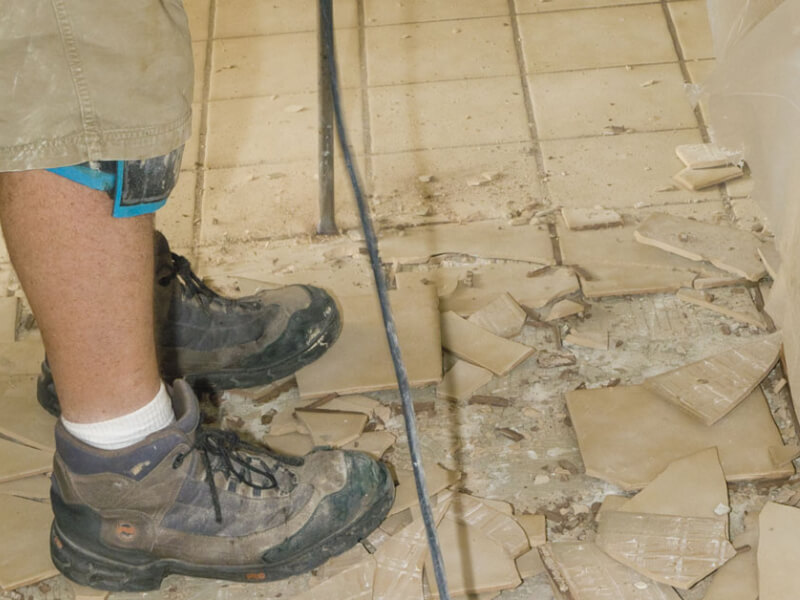Preparing Subfloor For Floor Tiles
Anytime you are going to install or reinstall flooring into a home, it is important that you first ready the subfloor it will be resting upon; obviously, for those reinstalling a floor, the old floor will need to be carefully removed before proceeding. There are number of things to check for before proceeding with your floor installation, especially if you want a flat surface that will last for years to come.
CHECKING AND REPAIRING SUBFLOOR
INSPECT SUBFLOOR
Before you begin work on laying your floor, it is important that you first thoroughly inspect the subfloor. Things to look for include:
Damage from or remnants of former flooring, such as glue, staples, nails, trim, and more. These pesky elements can interfere with your flooring efforts if left unchecked, so it is best to address them early. Any debris should be removed before proceeding.
Any visibly uneven or unlevel surfaces should be noted and, if possible, marked for addressing later.
Walk the entire subfloor to find any squeaking boards or creaking spots, then use a nail to secure these loosening boards to the joist below to prevent noise from escaping through your floors later.
Thoroughly sweep the floor to rid it of any dust and debris and double check that the floor is clean before proceeding with your floor tile installation.
CLEARING TRIM & FRAMES
It is possible that the floor tiles you will put down will be thicker or thinner than the previous flooring that was installed, which will mean that your trim may need to be adjusted or removed to allow for easy installation. Gently remove all trim from around doors, in corners, and along walls if it hasn’t been removed already. These elements can often be reinstalled at a later time, so keep them handy for then.
LEVEL SUBFLOOR
Often, especially in older homes, the subfloor was either never levelled correctly or has become unlevel over time. While this may seem like a tragedy that requires your subfloor to be entirely redone to avoid the risk of loose floor tiles, tripping hazards, and an unsightly floor, there is actually a simple way to fix even major portions of unlevel floors that will require only about a day’s work and some lumber. Locate the unlevel portion of the floor using a long board with a level placed centered on top, then adjust the board until the board until it is level and measure the most unlevel portion of the back of the board. Then, simply cut 2x10s or 2x8s in a wedge shape with the difference in level (minus width of future plywood) acting as the back portion of the wedge, and then tapering off toward the level portion of the floor. Secure these to the existing subfloor and plywood on the top, and you’ll enjoy an all-new level subfloor.
SELECT FLOORING
For the best floor tiles selection in San Fernando and Thousand Oaks, visit Transworld Tile’s showroom. Our wide selection and friendly staff are here to help you select the best possible floor tiles for your home.
